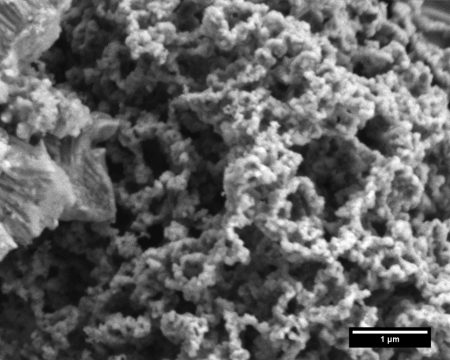
April 13, 2019 – In past postings I have talked about molten salt being used with solar power plants to overcome the intermittency issue that dogs some types of renewable energy. Vattenfall, a German electricity producer, launched on April 11th a pilot program using salt as a storage battery.
The storage medium is a product of SaltX Technology, a Swedish startup company. The Vattenfall test, oddly enough, is not being conducted to be a bridging source of power for an existing solar or wind project. Rather it is a test installation in the Vattenfall Wärme Berlin AG thermal power plant, located in Spandau, and will run until the end of this summer with results announced by year-end.
The salt medium is nano-coated natural limestone with high levels of volumetric energy density. It is non-corrosive and recyclable.

The coating prevents the salt crystals from sticking together which would reduce storage capacity and durability. With normal uncoated salt, the crystals clump together and charge-discharge-capacity is limited to no more than 50 cycles. Compare that to the nano-coated salt which can be used through thousands of cycles of charge and discharge.
So how does the SaltX thermal storage battery work?
- When the nano-coated salt is uncharged it is a mixture of salt and water.
- When charging the salt it is heated up to 500 Celsius (930 Fahrenheit) degrees.
- The water evaporates leaving a charged dry salt which retains the chemical energy stored within it.
- As long as the salt stays dry it remains charged.
- To release the energy you recombine the salt with steam or liquid water creating a chemical reaction which releases the heat.
How will it be used?
To store excess heat coming from an existing power source, whether it be generation equipment at a renewable or fossil fuel facility or waste heat from an industrial or manufacturing process. At scales ranging from as small as a heating storage system to warm up lithium-ion batteries in electric vehicles (EVs) when operated in cold climates, to large utility-scale storage for municipalities and cities, the SaltX technology displays considerable versatility.
For Vattenfall, the test at its Spandau thermal power plant will allow the utility to determine how it can scale the technology to the Megawatt capacity required, and then, how quickly can it react through charge and discharge cycles. Over this summer the system will be used to capture waste heat from the thermal power plant and discharge it into the Berlin district heating network.
Vattenfall is in the process of developing Europe’s largest power-to-heat facility and plans to phase out the coal-powered thermal technology by 2020 with a larger goal to eliminate coal from its power generation operations by 2030.








